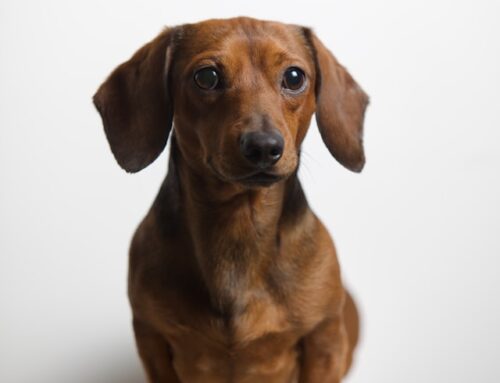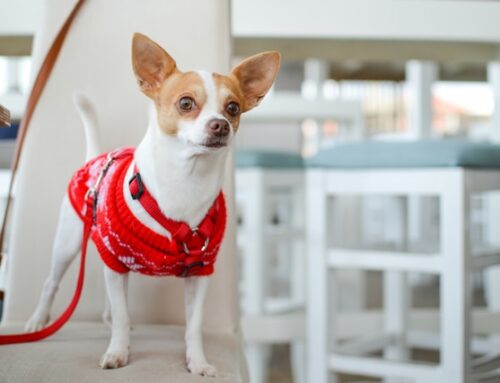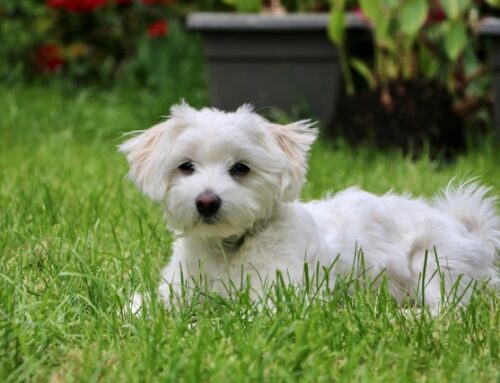Overview
Introduction to Maltese vs Shih Tzu
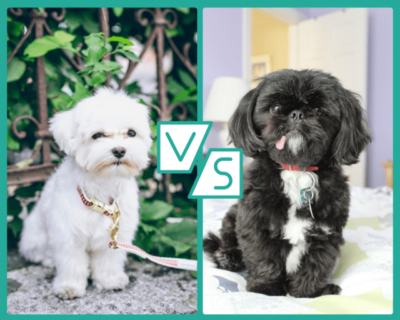
When it comes to choosing a furry companion, the world of dog breeds offers a multitude of options, each with its own unique charm and characteristics. Among these beloved breeds are the Maltese and the Shih Tzu, two small yet distinct dogs that have captured the hearts of many dog lovers worldwide.
In this comprehensive comparison of Maltese vs Shih Tzu, we delve into the key differences and similarities between these breeds, shedding light on what makes each of them special.
Overview of Shih Tzu and Maltese breeds
The Maltese and Shih Tzu are two popular small dog breeds known for their charming personalities and luxurious coats. Maltese dogs are famous for their long, flowing white hair and sweet, affectionate nature, while Shih Tzus are characterized by their unique facial features and playful demeanor.
Both breeds are beloved for their loyalty and make excellent companions for families and individuals alike. Understanding the differences between these two delightful breeds can help prospective dog owners choose the perfect furry friend for their lifestyle.
Purpose of the comparison article
The purpose of this comparison article is to provide a detailed analysis of the Maltese and Shih Tzu breeds, highlighting their differences and similarities. By examining their physical traits, temperament, grooming needs, and overall care requirements, prospective dog owners can make an informed decision when choosing between these two delightful breeds.
Whether you’re drawn to the elegance of the Maltese or the playful charm of the Shih Tzu, understanding their unique characteristics is essential in selecting the perfect canine companion.

Breed Origins: Maltese vs Shih Tzu
Maltese: History and origins
The Maltese breed boasts a rich history dating back millennia, with roots tracing to ancient Mediterranean cultures. Revered for their beauty and companionship, Maltese dogs were favored by royalty and nobility throughout history.
Both the Maltese and Shih Tzu share a heritage of being pampered lap dogs, treasured by their owners for their affectionate nature and elegant appearance. Today, the purebred Maltese continues to enchant owners worldwide with its silky white coat and playful demeanor.
Shih Tzu: History and origins
The Shih Tzu is a dog breed steeped in history, originating in ancient China where they were bred as companion dogs for royalty and nobility. Known for their distinctive appearance and friendly demeanor, Shih Tzus have long been cherished as loyal companions.
Today, Shih Tzus are beloved worldwide for their affectionate nature and playful personality, making them popular choices for families and individuals alike. Whether as a lively Shih Tzu puppy or a mature, loving companion, the charm of the Shih Tzu dog endures through generations.
Comparison of historical backgrounds of Shih Tzu and Maltese
The historical backgrounds of the Shih Tzu and Maltese reveal fascinating insights into their origins as beloved companion dogs. While both breeds have ancient roots, the Maltese can be traced back to Mediterranean cultures, where they were prized as aristocratic lapdogs. In contrast, the Shih Tzu has its origins in ancient China, where it was revered as a palace pet for Chinese royalty.
Despite their different beginnings, both breeds share a common heritage as cherished companions, known for their affectionate nature and elegant appearance. Today, they continue to enchant dog lovers worldwide, excelling not only as loving pets but also in dog sports and as companions to other dogs.

Physical Characteristics: Maltese Vs Shih Tzu
Maltese: Size, weight, and appearance
Maltese dogs are petite and elegant, fitting into the category of toy breeds and small breeds. At a glance, Maltese dogs have an average height ranging from 8 to 10 inches, making them charmingly small.
Their dainty size is complemented by a silky, white coat that drapes gracefully, adding to their overall appearance of elegance and poise.
Shih Tzu: Size, weight, and appearance
Shih Tzus are delightful little dogs that fall into the toy and small breed categories. Typically, they have a compact size, with an average height ranging from 9 to 11 inches.
Their sturdy build and flowing double coat give them a charming appearance, often described as lion-like, with a distinctive mane of fur around their face.
Comparing physical attributes
When comparing the physical characteristics of Maltese and Shih Tzu dogs, one can note distinct differences. The Maltese average height of 8 to 10 inches, is known for its small size and elegant appearance.
In contrast, the Shih Tzu, standing at around 9 to 11 inches tall, has a sturdier build and a distinct mane of fur around its face, reflecting its lion-like heritage. These differences in height and build are in accordance with each breed’s respective breed standards and reflect their unique parent breeds.
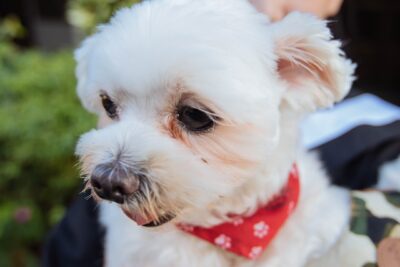
Temperament and Personality: Maltese vs Shih Tzu
Maltese: Temperament traits
Maltese dogs are beloved for their friendly and affectionate temperament, making them wonderful companion dogs. They typically get along well with other dogs and are known for their gentle nature, despite their small size.
Maltese owners often praise their dogs for being loyal and loving, though not all Maltese display the same temperament traits. Some individuals may be prone to separation anxiety if left alone for long periods due to their attachment to their owners.
Shih Tzu: Temperament traits
Shih Tzus are known for their friendly and affectionate nature, making them delightful companions for pet owners. These little dogs often form strong bonds with their pet parents and enjoy being part of a loving family.
While generally friendly, Shih Tzus can sometimes exhibit excessive barking, a behavior that can be managed through proper training and socialization.
Contrasting personality characteristics
When comparing the temperament and personality of Maltese and Shih Tzu breeds, distinct differences emerge. Maltese dogs are known for being extremely affectionate, forming strong bonds with their owners as typical of small dogs.
On the other hand, Shih Tzus are friendly dogs, also small in size, known for their lively and spirited personalities. Each breed showcases unique traits that appeal to different types of pet owners, highlighting the diverse range of personalities within the canine world.
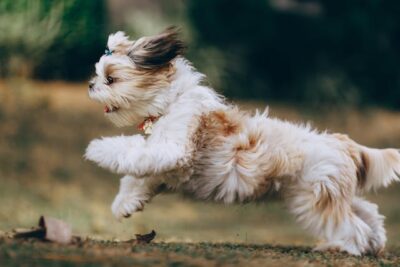
Exercise and Activity Needs: Maltese vs Shih Tzu
Maltese: Exercise requirements
Maltese dogs have relatively low exercise requirements and do not need much exercise to stay healthy and happy. Short daily walks and indoor playtime are usually sufficient to meet their needs.
Their small size and playful nature make them well-suited for apartment or city living where space may be limited.
Shih Tzu: Exercise requirements
Shih Tzus do not require much exercise, making them suitable for apartment living or homes without a yard. Short daily walks and indoor playtime are usually sufficient to keep them healthy and happy.
Their moderate exercise needs make them an excellent choice for individuals looking for a low-energy companion.
Comparing energy levels and activity needs
When comparing the exercise and activity needs of Maltese and Shih Tzu dogs, both breeds are considered little dogs with friendly personalities, making them suitable as pet-friendly companions.
However, Shih Tzus typically exhibit slightly higher energy levels compared to Maltese, requiring regular playtime and short walks to meet their activity needs. In contrast, Maltese dogs are content with indoor play and short walks, making them a great choice for those who prefer a less active lifestyle.
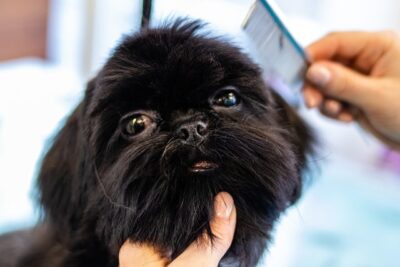
Grooming Requirements: Maltese vs Shih Tzu
Maltese’s Coat: Grooming needs and maintenance
Maltese dogs are known for their luxurious, silky coats that require regular grooming to keep them looking their best.
Their soft coat needs daily attention to prevent tangles and matting, making a grooming routine of at least once per day essential. This breed’s silky coats can easily become tangled, so regular brushing and grooming are necessary to maintain their beautiful appearance.
Shih Tzu’s Coat: Grooming needs and maintenance
Shih Tzus have a luxurious, silky coat that requires daily brushing and grooming to prevent tangles and matting. Proper care for Shih Tzus includes regular grooming sessions, ideally once per day, to maintain their coat’s health and appearance.
Their silky coat requires diligent attention, and daily grooming is essential to keep them looking their best.
Contrasting grooming requirements
When comparing the grooming needs of Maltese and Shih Tzus, Shih Tzus generally require more frequent grooming due to their luxurious, silky coats. Daily brushing is often necessary for Shih Tzus to prevent tangles and matting, while Maltese may require less frequent brushing.
Both breeds need regular grooming sessions to maintain their coat’s health and appearance, but the care for Shih Tzus typically involves more frequent attention compared to Maltese.

Trainability and Intelligence: Maltese vs Shih Tzu
Maltese: Trainability and intelligence levels
Maltese dogs are known for their intelligence and trainability, especially when properly trained. With consistent and positive reinforcement training methods, Maltese can learn commands and tricks quickly.
Their intelligence and eagerness to please make them a joy to train for owners who invest the time and effort into their training.
Shih Tzu: Trainability and intelligence levels
Shih Tzus, while intelligent, can have a stubborn streak that may affect their trainability, requiring patience and consistent training methods. However, with proper training and positive reinforcement, Shih Tzus can learn commands and tricks.
Their intelligence and affectionate nature make them trainable, especially when they sense a strong bond with their owner.
Comparing ease of training and intelligence
When comparing the trainability and intelligence of Maltese dogs to Shih Tzus, Maltese dogs are often easier to train, especially when it comes to crate training.
Their intelligence and eagerness to please make them receptive to training methods, including crate training, which can be particularly effective with this breed. Shih Tzus, on the other hand, may require more patience and consistent training due to their stubborn streak.

Health and Lifespan: Maltese vs Shih Tzu
Maltese: Common health issues and lifespan
Maltese, being a small dog breed, are prone to certain health issues, including hip dysplasia, luxating patella, and ear infections.
These conditions can affect their quality of life and lifespan if not properly managed. With proper care and regular veterinary check-ups, Maltese dogs can live a long and healthy life, typically ranging from 12 to 15 years.
Shih Tzu: Common health issues and lifespan
Shih Tzus, being a small breed, require special care to prevent common health issues such as hip dysplasia, luxating patella, and ear infections.
With proper care and attention, Shih Tzus can live a long and healthy life, typically ranging from 10 to 16 years. Regular veterinary check-ups and a healthy diet are important for maintaining their overall health and well-being.
Contrasting health concerns and average lifespan
When comparing the health and lifespan of Maltese and Shih Tzus, both being small dogs, they are prone to similar health issues such as hip dysplasia, luxating patella, and ear infections.
However, Shih Tzus have a slightly shorter lifespan, typically living between 10 to 16 years, compared to Maltese, which can live between 12 to 15 years with proper care. Regular veterinary check-ups and a healthy lifestyle are crucial for both breeds to ensure a long and healthy life.
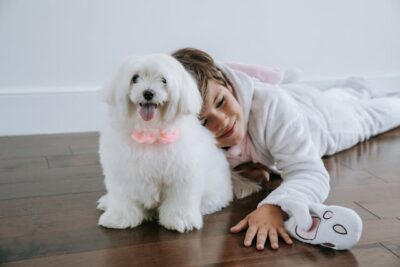
Compatibility with Children and Other Pets: Maltese vs Shih Tzu
Maltese: Interaction with children and other pets
Maltese dogs, with proper early socialization, can get along well with children and other pets, making them excellent companion animals.
However, due to their small size, they may be more suitable for households with older, gentle children. Supervision is always recommended to ensure the safety of both the dog and the children during interactions.
Shih Tzu: Interaction with children and other pets
Shih Tzus are known for their friendly and affectionate nature, making them good companions for children and other pets when properly socialized. Their playful and adaptable temperament allows them to interact well with children of all ages and other animals in the household.
However, supervision is recommended, especially with very young children, to prevent accidental injury due to the Shih Tzu’s small size.
Comparing compatibility with different family members and pets
When comparing the compatibility of Maltese and Shih Tzus with children and other pets, both breeds are generally well-suited as companion dogs. Maltese may be more suitable for households with older children, while Shih Tzus can adapt well to interactions with both older and younger children.
Both breeds can also get along with other pets and breeds, but early socialization is key to ensuring harmonious relationships within the family.

Adaptability to Living Environments: Maltese vs Shih Tzu
Maltese: Suitability for various living environments
Maltese dogs are well-suited for various living environments, including apartments and homes, due to their small size. However, they may not be the best choice for households with very young children, as their small size makes them more delicate and prone to accidental injury.
With proper training and supervision, Maltese can adapt well to most living situations, thriving as loving companions.
Shih Tzu: Suitability for various living environments
Shih Tzus are adaptable and can thrive in various living environments, including apartments and houses. However, their suitability for households with small children depends on the individual dog’s temperament and the children’s behavior.
With proper socialization and training, Shih Tzus can be great companions for families with children, but supervision is always recommended to ensure a safe and harmonious environment.
Contrasting adaptability to different living situations
When comparing the adaptability of Maltese and Shih Tzus to different living environments, both breeds can adapt well to apartment living and houses.
However, Maltese may be more suitable for households with older children due to their delicate size, while Shih Tzus can adapt to living with both older and younger children. Proper training and socialization are key for both breeds to thrive in various living situations.

Cost of Ownership: Maltese vs Shih Tzu
Maltese: Initial cost and ongoing expenses
The initial cost of a Maltese puppy can range from $1,000 to $4,000, depending on factors such as breeder reputation, pedigree, and location.
Additionally, ongoing expenses for Maltese, including food, grooming, veterinary care, and toys, can amount to several hundred dollars per year.
Shih Tzu: Initial cost and ongoing expenses
The initial cost of a Shih Tzu puppy can range from $500 to $3,000, depending on factors such as breeder reputation, pedigree, and location.
Ongoing expenses for Shih Tzus, including food, grooming, veterinary care, and toys, can amount to several hundred dollars per year.
Comparing the overall cost of owning each breed
When comparing the cost of ownership between Maltese and Shih Tzus, both breeds have similar overall expenses. The initial cost of a Maltese puppy can range from $1,000 to $4,000, while a Shih Tzu puppy can range from $500 to $3,000, depending on breed standard, pedigree, and location.
Ongoing expenses for both breeds, including food, grooming, veterinary care, and toys, are comparable, averaging several hundred dollars per year.
Summary of Differences: Maltese vs Shih Tzu
Recap of the key differences: Maltese vs Shih Tzu
In summary, the Maltese and Shih Tzu are both beloved small dog breeds with unique characteristics. The Maltese is known for its elegant appearance and affectionate nature, while the Shih Tzu is characterized by its playful demeanor and distinctive facial features.
While both breeds make excellent companions, they differ in areas such as grooming requirements, trainability, and compatibility with children and other pets. Understanding these differences can help prospective dog owners choose the breed that best suits their lifestyle and preferences.
Conclusion: Maltese vs Shih Tzu
Final thoughts on choosing between Maltese vs Shih Tzu
Choosing between the Maltese and Shih Tzu ultimately depends on individual preferences and lifestyle. The Maltese may be more suitable for those looking for a low-shedding breed with elegant looks, while the Shih Tzu may appeal to those seeking a playful and friendly companion.
Both breeds require regular grooming and attention, so prospective owners should be prepared to invest time and effort into their care. Regardless of the breed chosen, both the Maltese and Shih Tzu are sure to bring joy and companionship to their owners’ lives.
Considerations for selecting the right breed for your lifestyle and preferences
When selecting the right breed for your lifestyle and preferences, consider factors such as grooming requirements, exercise needs, and compatibility with children and other pets.
If you prefer a dog with minimal shedding and are willing to commit to daily grooming, the Maltese may be the right choice for you. On the other hand, if you’re looking for a playful and affectionate companion that gets along well with children and other pets, the Shih Tzu could be a better fit.
Ultimately, both breeds have their own unique charm and characteristics, so take the time to research and meet with breeders or rescue organizations to find the perfect match for you.
If you’re interested in Maltese puppies for sale in Florida and surrounding areas, check out our available puppies. For Shih Tzu puppies for sale in Florida and surrounding areas, check out our available puppies.
Our puppies are thoughtfully bred from reputable breeders and are raised as part of our family. We guarantee that your new family member will exceed expectations, bringing joy and companionship into your home.
Frequently Asked Questions (FAQs): Maltese vs Shih Tzu
- What makes Maltese and Shih Tzu good companion dogs?
- Both Maltese and Shih Tzu are known for their affectionate and friendly nature, making them excellent companions. They are both small dogs, well-suited for indoor living, and enjoy being around their human family members.
- Are Maltese and Shih Tzu good with children?
- Maltese and Shih Tzu can be good with children, especially if they are properly socialized from a young age. However, due to their small size, they may be more suitable for households with older, gentle children.
- Do Maltese and Shih Tzu get along with other pets?
- With proper socialization, both Maltese and Shih Tzu can get along well with other pets in the household. They are generally friendly dogs and can adapt to living with other animals.
- Are Maltese and Shih Tzu hypoallergenic?
- Both Maltese and Shih Tzu are considered hypoallergenic breeds, which means they are less likely to trigger allergic reactions in people who are allergic to dogs. However, no dog breed is completely hypoallergenic, so it’s important to spend time with the dog to see if you have any allergic reactions.
- How much grooming do Maltese and Shih Tzu require per day?
- Both Maltese and Shih Tzu have long, flowing coats that require daily grooming to prevent matting and tangles. Daily brushing and regular baths are necessary to keep their coats healthy and clean.
- What are the main differences between Maltese and Shih Tzu?
- While both breeds are small, friendly dogs, they have some differences in appearance and temperament. Maltese dogs are known for their long, silky white coats and elegant appearance, while Shih Tzu dogs have a distinctive mane of fur around their face and a playful demeanor.
- Are Maltese and Shih Tzu considered toy breeds?
- Both Maltese and Shih Tzu are considered toy breeds, which are small dog breeds that are bred to be companions. They are often kept as pets due to their small size and friendly nature.
- How long do Maltese and Shih Tzu live?
- On average, Maltese dogs live between 12 to 15 years, while Shih Tzu dogs live between 10 to 16 years. Proper care, including a healthy diet and regular exercise, can help extend the lifespan of both breeds.

